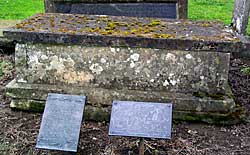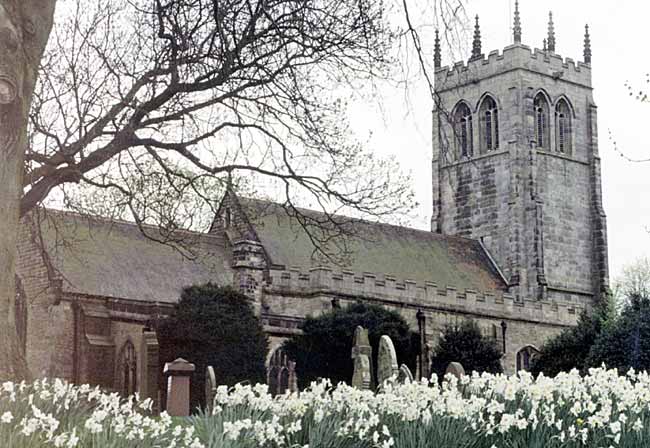After the Civil War
Col. White was a Presbyterian elder in 1656, but in 1659 he took part in the premature rising to restore the monarchy and was imprisoned until the Restoration, only to die in the following year of the plague then rampant. Millington was condemned as regicide, and although his life was spared his estates were forfeited and he perished in captivity in 1666. The ejected Smalley was then ministering to a large congregation in the house of a tanner named Mill which may have been the conventicle which for a few months about 1672 was licensed; under the illegal toleration. Non-conformity had come to stay, and in 1743 the parson reported 40 families of dissenters in the parish.
By 1720, the Capel interests had devolved upon Sir Robt. Sutton, who gave £10 a year to the church (which had benefited largely from Queen Anne's Bounty) and in 1737 presented to the living its most distinguished holder, Wm. Warburton, the future Bishop of Gloucester. In that year, and again in 1753, the church was restored, and in 1753 Sir Robert sold the manor to the Lambs, of whom Visct. Melbourne owned much land here 1798, his heir being the statesman who was Prime Minister when Queen Victoria came to the throne.

The grave of Benjamin Drawwater (photo: A Nicholson, 2004).
The churchyard contains the grave of Benjamin Drawwater whose epitaph records that "in his professional capacity" he circumnavigated the globe with Capt. Cook in 1772-75. The enclosure was made in 1775 and a decade later Thos. Thoroton informed the Duke of Rutland that a canal then projected would greatly improve the value of his lands and collieries "about Ilkeston and Greisley." The Derby Canal was soon afterwards opened, part of Littlefield and some charity land being absorbed in its construction, and at the turn of the century pits and hosiery-frames were busy.
It was due to the pits that the population of the whole parish rose from 2,968 in 1801 to 11,861 during the ensuing 100 years: in 1801 the village itself had 353 inhabitants, Lord Melbourne was the principal, proprietor and, like his distinguished son after him, was occasionally in residence at Lamb Close House, now in its enlarged form the home of the Barbers. As Lamb was the family name of the Melbournes (who came from Southwell) it may be assumed that the mansion bearing their name was built by them, probably early in the reign of George III; and it may be mentioned that the statesman's mother was Elizabeth Milbanke, a lady who was far from being a prude like Byron's wife and who lent a sympathetic ear to the poet after his rupture with her relative.
The Spoilt Church

Greasley church (photo: A Nicholson, 2003).
In 1803 there stood on the south side of the chancel the ruins of a structure which some have thought to have been Greasley's first stone church: they were destroyed at the restoration of 1832 and swelling lines of turf now cover their foundations. The church fabric has been so frequently restored that little of historic interest survives. Many ancient features disappeared in 1832: other were "restored away" during the restoration of 1866, while 30 years later, the church was so endangered by coal-workings that much rebuilding was compulsory. "The body of the church is entirely modern," wrote Dr Cox in 1912. but the chancel contain some ancient masonry, the tower and font are 15th century work, fragments of old window tracery have been built into the vestry window and the interior has a memorial slab of 1405. There are some ancient and modern memorials of owners and clergy, (of no great interest), but for the antiquary the large church offers little more.
The last 100 years have witnessed important changes. Kimberley has been
carved out of the parish: Brinsley was detached in 1861; in 1877 Giltbrook
and Gilthill were transferred to it from Nuthall which received Greasley's
outlying portion of Hempshill. The Duke of Rutland's Castle Farm Estate
passed to the Grammers and Earl Cowper, the Barbers and Rollestons became
chief local owners. But the aspect, especially around Beauvale, preserves
much of its old woodland charm and D. H. Lawrence--the Nottinghamshire
Thomas Hardy--has portrayed it in his various works. The Graymede of
his "White Peacock" is Felley Priory: Moorgreen reservoir he
calls Nethermere and High Close is the Lamb Close at the wider end of
the lake. Beside the water is the former shooting-box of Earl Cowper
who died in 1905, its High Park Wood covering hundreds of acres with
a Robin Hood's Well and an open glade which in bygone times was famous
as a haunt for rustic
dancers.
